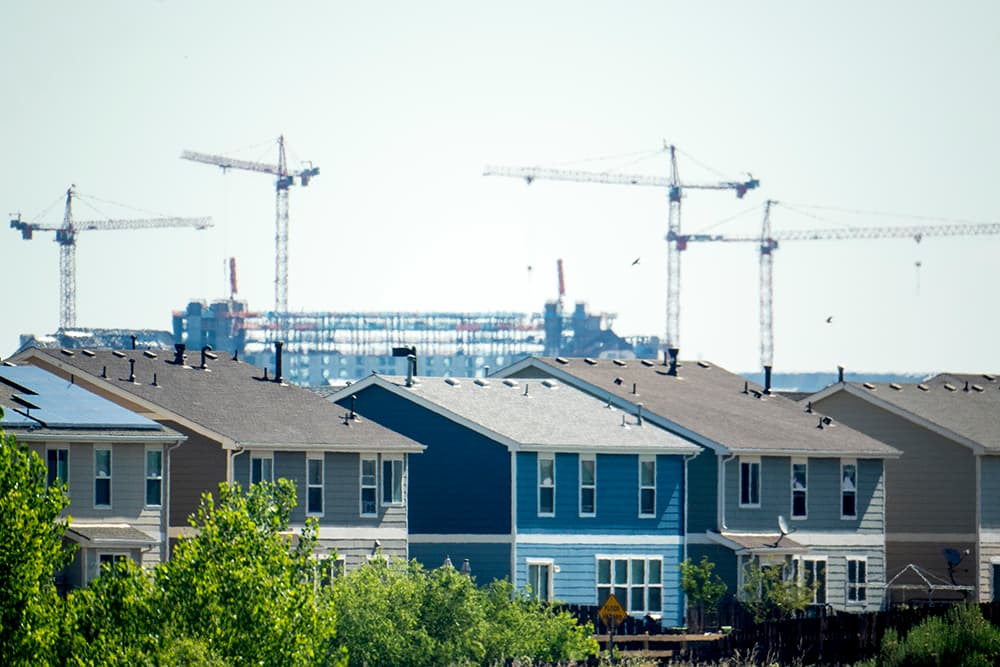The nation is finally starting to fully recover from the housing crash that took place a decade ago, according to a new report from Zillow. In many markets throughout the country, homes are worth more now than they were worth in the pre-recession era.
In fact, 99.6 percent of homes in the Denver market are worth more than they were in June 2006, at the height of the housing bubble. Coming in just behind Denver: Dallas-Fort Worth, Texas, at 97.7 percent, Seattle at 97.3 percent and Houston at a flat 97 percent.
The typical home in Denver is worth $397,700, which is 65.6 percent higher than the usual price a decade ago. Across the country this year, 50.4 percent of homes are worth more than they were pre-recession. The median home value was $217,300, up 8.3 percent from the previous year and actually up 8.4 percent from the peak of the housing bubble.
“Even a decade after the 2008 financial crisis, and five-plus years into the recovery, it’s clear that the housing boom and bust was felt very differently in various markets — and is still being felt today in many,” Zillow senior economist Aaron Terrazas said in a press release.
Baltimore, Chicago and cities in Florida haven't fared as well.
| Metropolitan Area | Share of Homes Worth More than Pre-Recession Peak | June 2018 Zillow Home Value Index (ZHVI) | ZHVI YoY Change | June 2018 Zillow Rent Index (ZRI) | ZRI YoY Change | Inventory YoY Change | |||||||
| United States | 50.4% | $ 217,300 | 8.3% | $ 1,440 | 1.3% | -4.8% | |||||||
| New York, NY | 28.5% | $ 429,300 | 6.7% | $ 2,375 | 0.5% | 0.1% | |||||||
| Los Angeles-Long Beach-Anaheim, CA | 64.4% | $ 646,300 | 7.6% | $ 2,752 | 2.8% | 7.3% | |||||||
| Chicago, IL | 14.6% | $ 220,400 | 5.8% | $ 1,637 | 0.0% | -1.1% | |||||||
| Dallas-Fort Worth, TX | 97.7% | $ 229,400 | 11.6% | $ 1,595 | 0.6% | 36.9% | |||||||
| Philadelphia, PA | 35.9% | $ 228,100 | 5.9% | $ 1,567 | 0.2% | -7.2% | |||||||
| Houston, TX | 97.0% | $ 198,600 | 5.8% | $ 1,549 | 0.9% | -4.8% | |||||||
| Washington, DC | 22.1% | $ 399,500 | 4.2% | $ 2,132 | 0.6% | 6.3% | |||||||
| Miami-Fort Lauderdale, FL | 9.6% | $ 272,900 | 7.7% | $ 1,860 | 0.8% | 2.2% | |||||||
| Atlanta, GA | 64.3% | $ 204,600 | 11.6% | $ 1,394 | 3.6% | -15.7% | |||||||
| Boston, MA | 83.0% | $ 455,600 | 7.2% | $ 2,363 | 0.5% | -1.5% | |||||||
| San Francisco, CA | 85.8% | $ 953,600 | 11.0% | $ 3,399 | 1.1% | 3.6% | |||||||
| Detroit, MI | 32.5% | $ 154,900 | 9.7% | $ 1,194 | 3.1% | 0.6% | |||||||
| Riverside, CA | 6.5% | $ 356,800 | 7.4% | $ 1,897 | 5.6% | 9.9% | |||||||
| Phoenix, AZ | 12.5% | $ 254,700 | 8.0% | $ 1,365 | 2.9% | -9.4% | |||||||
| Seattle, WA | 97.3% | $ 492,700 | 11.4% | $ 2,176 | 1.9% | 1.9% | |||||||
| Minneapolis-St Paul, MN | 61.3% | $ 261,300 | 7.6% | $ 1,637 | 2.6% | -4.3% | |||||||
| San Diego, CA | 63.4% | $ 583,700 | 6.6% | $ 2,541 | 2.0% | 28.3% | |||||||
| St. Louis, MO | 51.3% | $ 161,400 | 5.5% | $ 1,139 | 0.0% | -6.0% | |||||||
| Tampa, FL | 18.9% | $ 204,600 | 10.9% | $ 1,389 | 2.7% | -0.2% | |||||||
| Baltimore, MD | 8.7% | $ 264,800 | 5.0% | $ 1,740 | 0.9% | 1.5% | |||||||
| Denver, CO | 99.6% | $ 397,700 | 7.4% | $ 2,053 | 2.1% | -13.4% | |||||||
| Pittsburgh, PA | 87.8% | $ 141,300 | 7.9% | $ 1,082 | 0.8% | -12.5% | |||||||
| Portland, OR | 94.8% | $ 391,200 | 5.9% | $ 1,835 | 0.5% | 18.9% | |||||||
| Charlotte, NC | 88.2% | $ 195,800 | 11.0% | $ 1,293 | 2.5% | 9.1% | |||||||
| Sacramento, CA | 19.8% | $ 400,100 | 6.4% | $ 1,842 | 5.4% | -1.7% | |||||||
| San Antonio, TX | 98.8% | $ 185,000 | 5.6% | $ 1,334 | 0.2% | 12.7% | |||||||
| Orlando, FL | 5.4% | $ 226,900 | 9.7% | $ 1,447 | 3.3% | -11.1% |
“In markets like Las Vegas that got farthest ahead of themselves during the boom, and consequently fell the most, a large majority of homes are still not worth as much today as they were a decade ago. But, in markets like Denver that were more stable a decade ago, many more homes are worth more now than ever before," he continued. "Despite widespread and consistent home value growth today, the scars of the recession still run deep for millions of longer-term U.S. homeowners, and it may take years of growth for their home to regain the value lost a decade ago. And while stabilizing growth in rents is likely a relief for those renters saving to become homeowners, many of those would-be buyers in a number of the nation’s hottest markets will be contending with home prices that are as high as they’ve ever been.”
One fundamental principle of economics that may be helping to drive up these costs well past pre-recession levels is supply and demand. In just one year, the amount of available homes has dropped 13.4 percent. In that same time, rents rose 2.1 percent and now have a median cost of $2,053.














